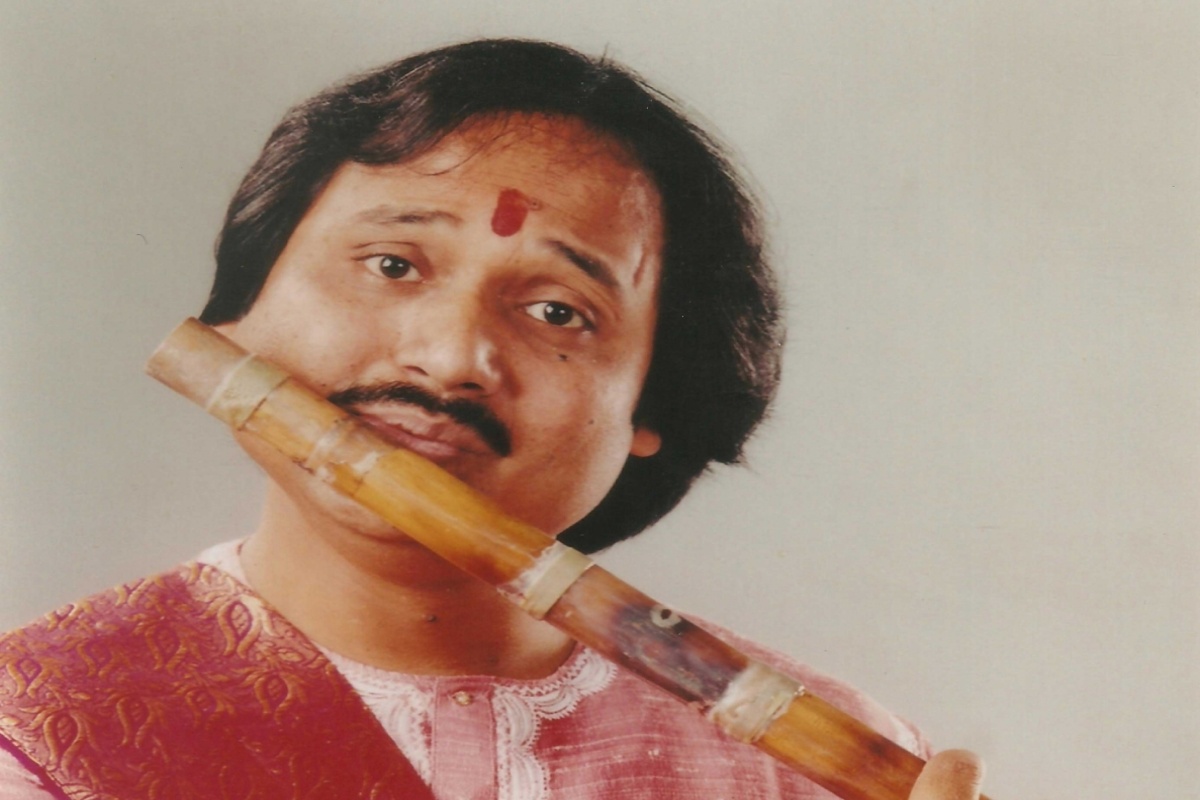Karan Aujla and OneRepublic team up for new single ‘Tell Me’
Karan Aujla’s upcoming album promises a fusion of Punjabi vibes with global influences, featuring bold collaborations like 'Tell Me' with OneRepublic.
The bansuri master recently conduced a masterclass on bansuri and its nuances for SaPa India (The Subramaniam Academy of Performing Arts). He also taught the techniques to use emotions while playing to make the performance soulful.

Unnecessary crowd of musicians in the field today:Flutist Ronu Majumdar.(photo:IANSLIFE)
Renowned Indian flute wizard Ronu Majumdar, who has as one of his feats the welcome song of Asiad Games 1982 with Pt. Ravi Shankar as well as a Grammy nomination, feels there is “an unnecessary crowd of musicians in the field” since many flute hobbyists often want to do full-time work based on a year of training.
A Hindustani musician who has performed alongside artists like R.D. Burman, Vishal Bhardwaj, and Asha Bhosle, Majumdar has conducted a concert of 5,378 flautists on one stage called ‘Venu Naad’ under the banner of ‘Art of Living’ — an event which been recorded in the Guinness Book of World Records.
Advertisement
The bansuri master recently conduced a masterclass on bansuri and its nuances for SaPa India (The Subramaniam Academy of Performing Arts). He also taught the techniques to use emotions while playing to make the performance soulful.
Advertisement
The musical artiste on the sidelines of the masterclass. Excerpts from the interview:
Q: As a performing art, how difficult is flute-playing to master?
A: It is very difficult at any instrument. In the beginning it looks very easy, and you can make sounds in one month and then when your fingers start moving, you can play some film song and it looks like it is very easy and that’s why there is a huge crowd of flute players in last 10 years. When I started playing flute it was believed to be the most difficult instrument to play in tune because there is nothing to tune in this instrument. You can find tune options above the violin, sitar or sarod, but in flute, you can only balance the tuning by blowing pressure. Now, if you want to be a good flutist and play good music, it is really difficult and it takes years like any other instrument like violin, veena or sitar or anything like that.
Q: You began to learn the bansuri many years back. Please give us a glimpse of your own learning experiences.
A: My experience of flute learning from childhood has been a great experience. I don’t come from a musical background and my father played flute as a hobby. So, I was born in Varanasi and started learning from my father at the age of six and then I came to Mumbai in 1973, I was 10 years old that time and I got my guruji, great late Pandit Vijay Raghav Rao. Along with North Indian music, I got to know little bit of Carnatic music system. Simultaneously, was learning vocal music from Pandit Laxman Prasad Jaipurwale, the great vocalist of that time. This training led me to 1980, I met my grand guru Bharat Ratna Pandit Ravi Shankarji and I played the famous song ‘Atha Swagathan Shubha Swagatham’, that welcome song of Asiad’82 with him. So, I got the opportunity to learn from Pandit Ravi Shankar as well.
Q: Do you see an active interest in today’s generation to learn and play, and listen to and appreciate flute-playing?
A: The learning and the appreciation of bansuri has increased in a great manner and there are some who take flute as a hobby and they listen and appreciate flute playing. Today’s generation is more into flute because lots of people use the technology and online opportunities and make their own YouTube channel and post it. There are people who keep making covers, no one can stop them whether they are good or bad, and they just do it. So, by doing that they get to know a little bit and appreciate it also but there is very little knowledge of differentiating if it’s good or bad, so that is a pity.
Q: Who do you see usually learning the bansuri — are there more hobbyists or learners wanting to take it up full-time?
A: I will answer very honestly that there are hobbyists who want to be full time just by learning nothing. That’s the saddest point of music nowadays. But who will decide whether the learner is ready to take up full time? You will see a lot of mediocres at basic level, but they are full time, and they are surviving because the people who hire these flute players don’t know whether this guy is ready or not. Sadly, some students came to me who just learnt for a year or they have their YouTube channel, and they asked the guru to subscribe. This is a very sad part of the whole business. There is a very thin line, hobby and full time. The people who are good at hobbies want to take this full time and that’s why there is an unnecessary crowd of musicians in the field. It’s a pity.
Q: Please tell us about the recent SaPa masterclass on learning the bansuri and its nuances.
A: The SaPa master class will focus on making serious musicians and the basics because if you know the basic exercises which helps you to move your fingers for dhamakas, for plain notes and specially the half note perfection has always been a very complex discussion for flute playing. Because half notes, the komal notes are not as perfect as other instruments, they are little out of tune or little one or two microtone differences. So, I explained those nuances.
Advertisement